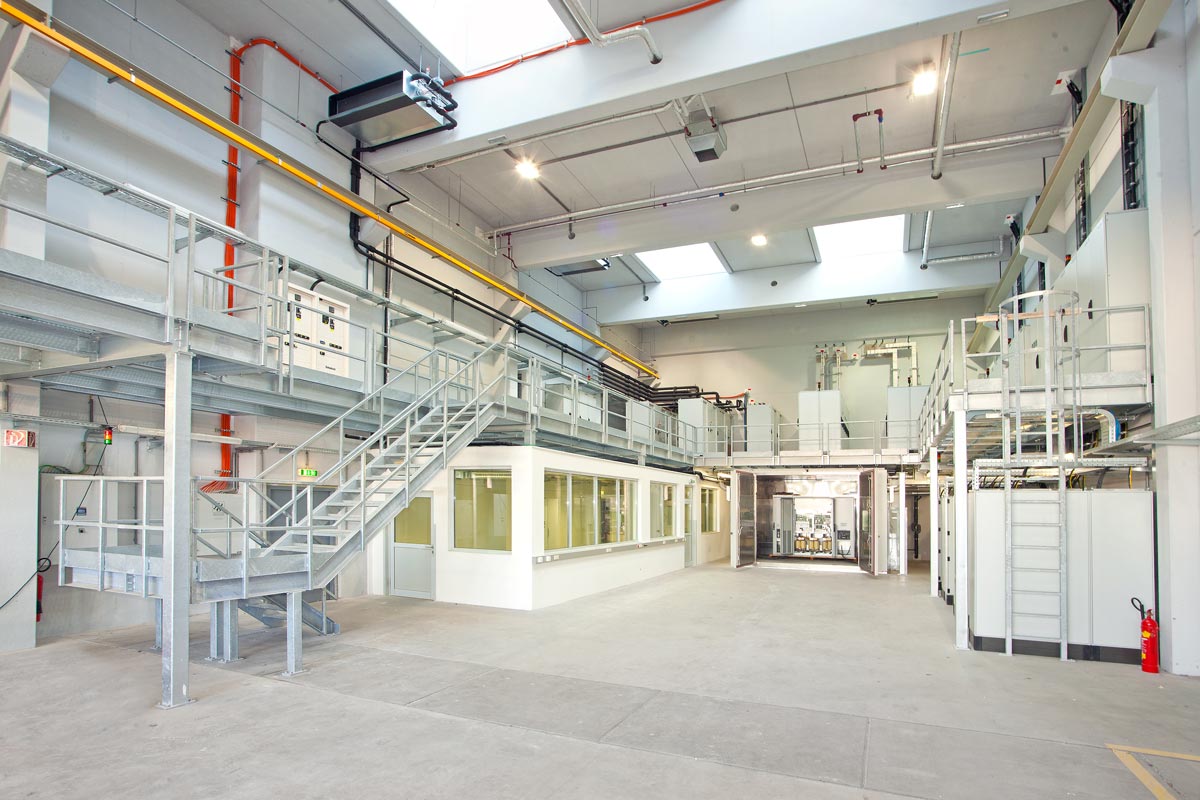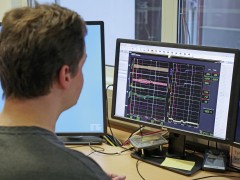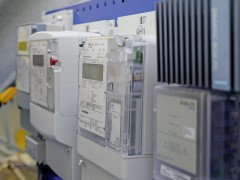Implementing smart grids necessarily brings up the question of how new components and control strategies will affect the networks. Safety considerations preclude testing different scenarios in actual network operation. With the SmartEST Laboratory AIT Austrian Institute of Technology provides a unique test and research infrastructure for tomorrow’s smart grids.
The laboratory offers researchers, grid operators and manufacturers of components for local electrical facilities an ideal experimental environment for development work. Here the interactions between equipment and the upper levels of the grid can be analysed and products like inverters, storage systems and smart meters as well as control strategies can be tested and developed further. The entire range of local power technology components, from PV inverters via power storage systems such as accumulators or fuel cells all the way to cogeneration units or charging points for electric vehicles, are candidates for testing.
With 400 m2 of floor space, the laboratory has indoor and outdoor testing areas with many different functions. The infrastructure features three configurable laboratory networks that can be operated at a constant output of up to 1000 kW. The equipment includes network simulators, PV simulators, a facility for setting up stand-alone networks, facilities for Power-Hardware-in-the-Loop simulation, plus an environmental test chamber for extreme temperature and humidity conditions.
In so-called Power-Hardware-in-the-Loop (P-HIL) simulations a node is simulated in real time and the components to be tested are tied into the virtual network environment as hardware. The simulations indicate how compatible the components in question are with the higher-level network structure and with other devices on hand.
FUNCTIONS of the SmartEST Laboratory
> Accredited testing components and systems for local generation with simulated networks and primary energy sources (e.g. PV inverters)
> Electrical tests for switching, functions and performance as per standard
> Simultaneous testing of components‘ power and communication interfaces
> Performance and durability tests under controlled ambient conditions
> Simulation and testing of individual components and entire systems and facilities
> P-HIL tests using real-time simulation and multi-domain co-simulation
> Simulation of smart grid scenarios
DC LAB – DC networks at medium- and low-voltage level
PV facilities, power storage systems, and accumulators for electric vehicles will play a key part in the power system of the future. All these elements operate with direct current; if they were tied directly into a DC network, the power losses resulting from inverting from Direct Current (DC) to Alternating Current (AC) could be diminished. Even today power from offshore wind parks is transmitted to the mainland over considerable distances as high-voltage DC, with a minimum of loss. In future DC networks could be employed at medium and low-voltage levels, too.
In the Austrian DC Labs project AIT Austrian Institute of Technology together with the Nikola Tesla Laboratory at Graz University of Technology is developing new methods of testing and certifying elements for these grids. This is intended to strengthen the hand of Austrian developers and manufacturers of power electronic components in global competition.
Share


